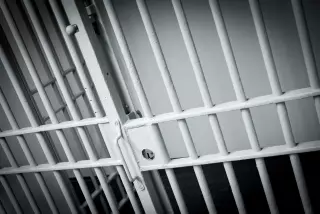Dec. 4 Accident : Gas Poisoning Still Affects 48 Students
- Share via
A total of 48 Mount St. Mary’s College students have been treated in a compression chamber for the after-effects of a carbon monoxide leak from a gas heater eight days ago, college and hospital officials said Thursday.
The students--suffering chiefly from loss of memory, light-headedness and nausea--were placed in the large chamber for two hours to breathe pure oxygen under barometric pressure twice that of sea level to purge their bloodstreams and body tissue of the gas.
Most of the students entered the chamber, about the size of a railroad tank car, Wednesday night and Thursday after a battery of physical and psychological tests at a Northridge hospital.
The young women, wearing orange medical smocks and special plastic hoods, carried along their textbooks to study for next week’s final exams.
Because the level of carbon monoxide in the students’ blood was low, only one session in the chamber probably will be necessary, the physician in charge said.
School officials said perhaps 20 more students suffering the after-effects of the Dec. 4 accident might require the treatment at Northridge Hospital Medical Center’s Western Center for Hyperbaric Medicine.
Some students said they began to experience a variety of symptoms immediately after the gas leak in a dormitory at the West Los Angeles college. Others said they suffered a delayed reaction to the carbon monoxide poisoning.
“I took a chemistry test and could not multiply,” 18-year-old Sheri Kellogg said.
“I started feeling the effects last Thursday and Friday,” said Anne Dempsey, 21. “I was light-headed.”
Nancy La Mear, 21, complained of “headaches and weird dreams.”
The leak at Carondelet Hall, later attributed to a burned-out motor in the heater’s system, forced the evacuation of 200 students and five nuns in the early morning hours of Dec. 4.
The five nuns and 18 students were immediately treated at nearby hospitals. The nuns were treated in the chamber later that day.
The recently installed chamber is commonly used for decompression sickness among deep-sea divers.
The school’s dean for student development, Cheryl Mobey, said that once the nuns and the original 18 students were treated, school officials thought that no further problems existed.
But within 48 hours “a number of students had recurrent symptoms,” she said. She said they would complain, “I feel out of it.”
Campus officials contacted Dr. John Alexander, director of the hyperbaric medicine center, and then advised all 200 students to report for physical, neurological and psychological testing. By late Thursday, about 150 had been tested to determine the need for treatment in the chamber.
The reason carbon monoxide has the effect it does, Alexander said Thursday, is that the gas “not only binds to the blood but binds to cells in the body. This binding can affect higher cognitive function--thinking, memory, this kind of thing.”
“Treated in the chamber,” he added, “these effects are reversed. If not treated there’s a chance of some long-term dysfunction.”
More to Read
Sign up for Essential California
The most important California stories and recommendations in your inbox every morning.
You may occasionally receive promotional content from the Los Angeles Times.













